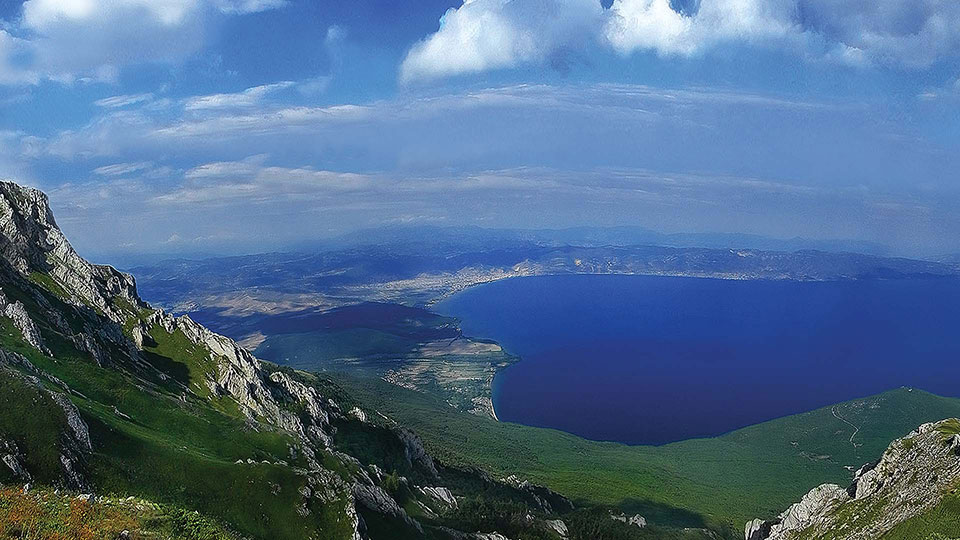Natural values of the National Park Galicica
From the National Park Galicica stretch the stunning views of the Ohrid Lake and Prespa Lake. It is especially attractive for visitors to observe the two beautiful lakes at the same time. The landscape attractive, aesthetic and rare values also apply to the mountain characteristics Galicica owns.
The uniqueness of the National Park Galicica
In the southwestern part of Macedonia, like a separator that divides Ohrid and Prespa Lake, the beautiful mountain Galicica extends. The National Park Galicica is a part of the mountain, and along with the city of Ohrid and the lake, it was placed under the protection of UNESCO.
It is interesting that Galicica is a karstic mountain, striking in the geographical environment with its magnificent size. The highest peak Magaro is located at an altitude of 2,254 metres. The terrain has a large presence of relict plants, with 11 plant species that can be found only at this site, and 26 endemic animal species are registered. This is due to the large amount of rain during the year. Especially striking is the number of butterflies - 1644 species on such a small area.
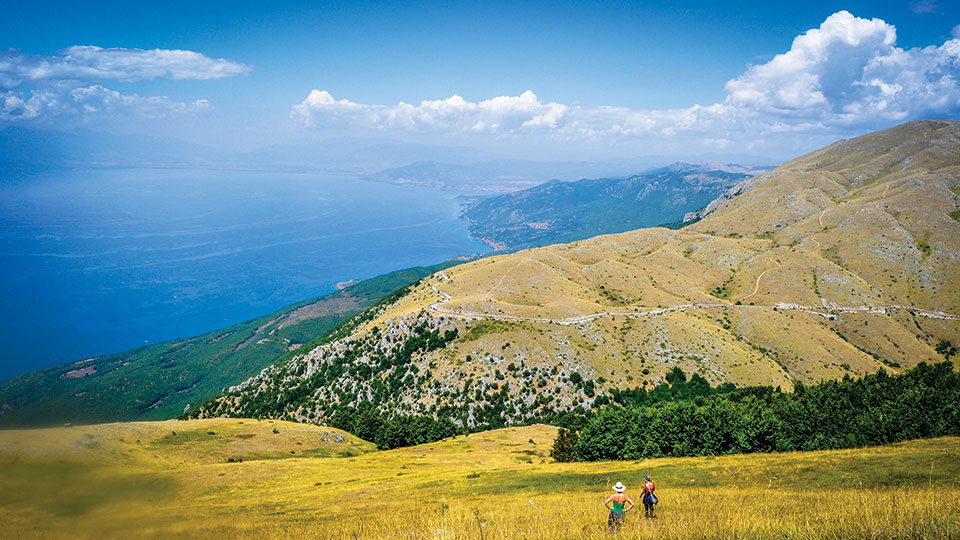
The flora of the National Park Galicica
The flora and fauna are important values of the National Park Galicica. Representatives of various floristic types exist in this area. They are located on steep and vertical rocks, the stony areas and taluses, or on shallow or deeper soil. Such a variety of the relief and pedological substrate, as well as other environmental factors, caused the appearance of various floral forms that are very rare or are inherent only for this space.
The flora is represented by over 600 floristic species, of which over 170 are of woody vegetation. Such diversity can not be observed on other mountains in the Republic of Macedonia. This does not apply only to the Republic of Macedonia, but also to a much wider area. In the area of the National Park Galicica, the variety of plant species and environmental conditions have created a large number of floristic communities.
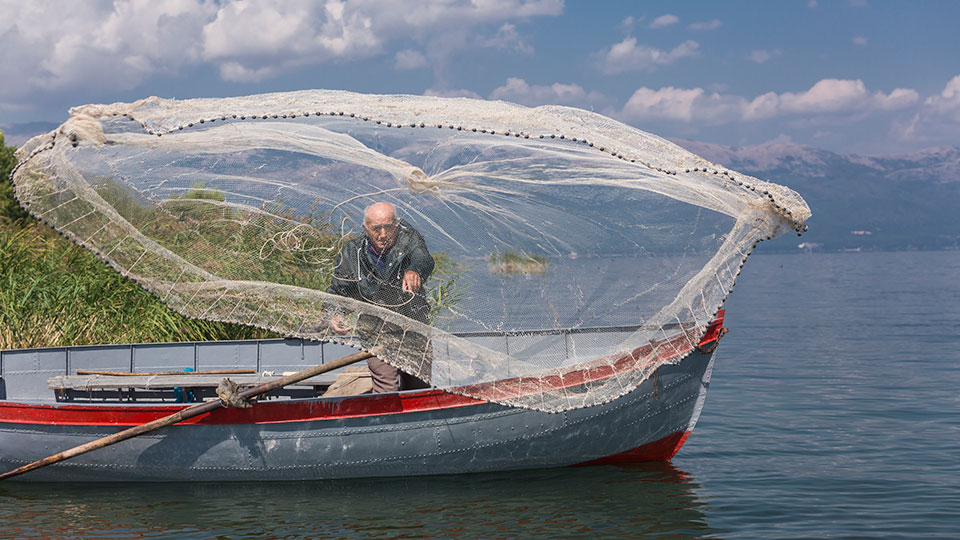
Fauna of Galicica
The National Park Galicica is characterized by an interesting and diverse fauna. The research of the large fauna points to the existence of about 170 species of animals, of which 10 species are amphibians, 18 species are reptiles, 124 bird species and 18 mammalian species. There are also thousands of other animals, which are mostly examined in the Ohrid Lake. The richest fauna can be found in the area of the natural park in which human presence is lower. Such is the example of the island of Golem Grad, where a number of different funistic specimens live on it and in the waters surrounding it.
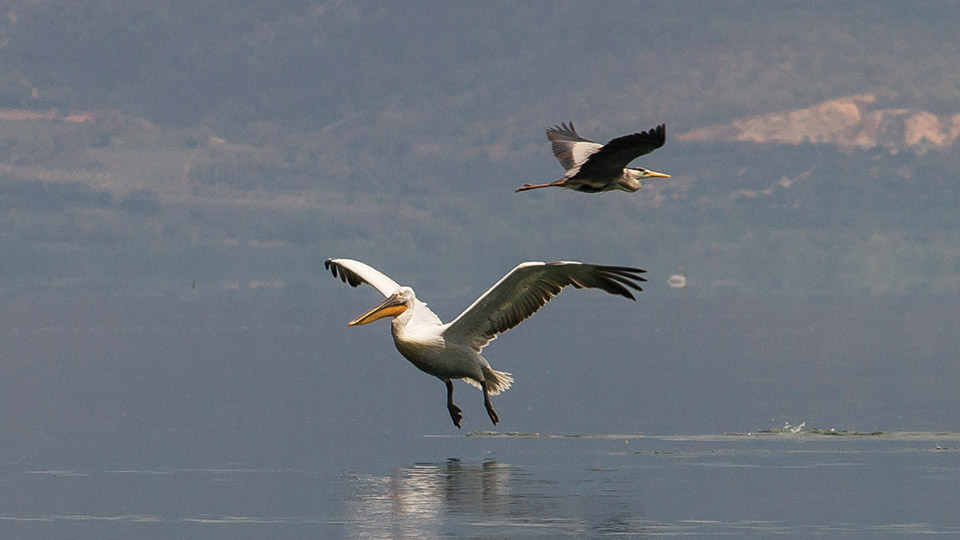
Cultural and historical monuments in the National Park Galicica
Besides the natural values, the National Park Galicica also has significant cultural and historical monuments. There are numerous monuments of great historical and artistic significance in the park, which are one of the strong reasons for visiting the park. As an integral part of the geographical area, the cultural heritage is an image of the time in which it was created. The monuments of culture in the National Park Galichica, in addition to the number, are characterized by a great variety, and therefore they are divided into several groups: archaeological sites, churches, monasteries, cave churches and monuments.
Island Golem Grad
One of the monuments in the park, which in its importance is one of the more important of its kind not only within the park and in the region, but also in the wider area, and at the same time strictly protected areas, is the island of Golem Grad in the Prespa Lake. To reach this island you can find transport in the villages of Stenje and Konjsko. The island Golem Grad is the only island in the Republic of Macedonia.
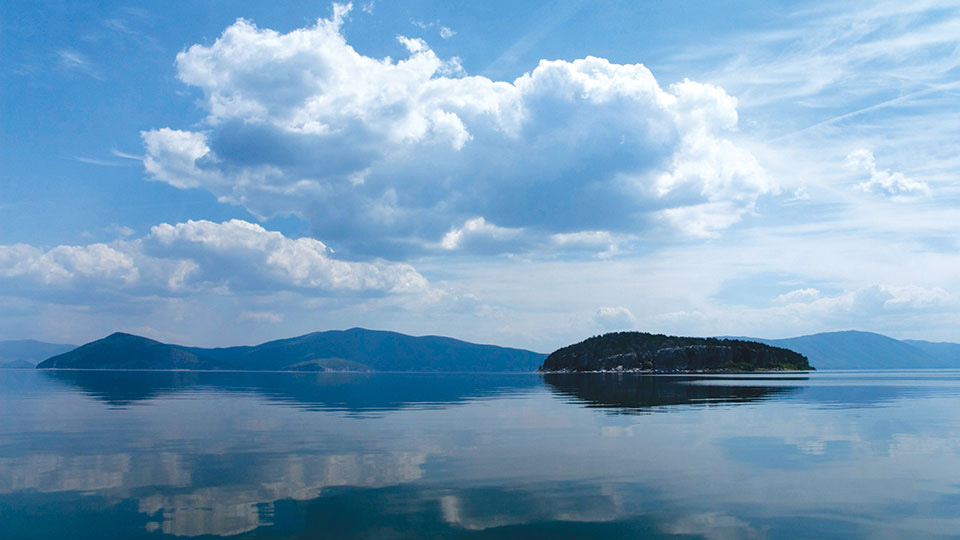
Churches and Monasteries in the National Park Galicica
From the group of churches, monasteries, cave churches, on the territory of the park the following monuments have been registered: from the monuments of Byzantine style with paintings of European importance is the church "St. Bogorodica Zaumska" from 1361. The church has undergone conservation interventions and is in good condition accessible to visitors. In the village of Velestovo, the church "St. Bogorodica" from the 15th century.
From the cave churches under protection are placed: the Church "St. Bogorodica" in the village of Pestai from the 14th century, the church "St. Bogorodica" in the Gradiste camp, the church " St. Stefan ", which dates back to the middle of the 9th century, and which is with conservated painting.
Of the cave churches that have not yet been put under protection are: the Church "St. Petar and Pavle" on the Prespa Lake, near the border of the Republic of Macedonia with the Republic of Albania, the Church "St. Petka", between the village of Stenje and the village of Konjsko located on the rocks of the shore of the Prespa Lake, the church "St. Ilija" near the village of Trpejca from the 14th century.
Recreational activities
Based on such an emphasized treasure, the National Park Galicica can be used for walks and running along the recreational paths. Locating vistas in suitable places such as the Baba crest (1,631 metres), the peak Lako Signoj (1,953 metres), the peak Gola Buka (1,887 metres) and Elenov Vrv (1,221 metres) above the village of Velestovo, as well as elsewhere, should discover the possibilities of gorgeous views to the two valleys and mountainous spaces.
The high slopes provide an excellent terrain for mountaineering. Thus, the slope under the peak Magoro (2,255 m.) is 760 metres high and is very suitable for alpine conquest, while the slopes under the peak Golem Vrv and Tuglajs, the height of which is 180 metres, are suitable for beginner alpinists.
Caves in this national park are only used by speleologists, although there are conditions for speleological tourist activities.
Winter and sports skiing activities take place in the Suvo Pole complex, under the peak Tomoros (1,675 metres), that is, in the Oteshevo complex, but there are conditions for fitting into other areas in this kind of tourist offer. The stated possibilities for tourist activities are remarkably complementing the activities of sunbathing, as a dominant tourist offer in this area.
Tourist attractions in the National Park Galicica
The National Park Galicica offers visitors numerous recreational and tourist attractions. For those who want to recreate and enjoy nature, we recommend that they use the marked hiking, cycling and mountaineering trails.
Climbing one of the highest peaks of Galicica - Magaro
If you are in Ohrid, from the petrol station near Biljani Izvori, you can head to the village Velestovo on foot. If you are in a good physical shape continue to the area Krstec, from where a wonderful view extends over the large karst field "Dzafa" and the largest part of the massif of the Mountain Galicica.
To climb one of the highest peaks of Galicica - Magaro follow the trail that starts near the locality "Baba", along the regional road Ohrid-Trpejca-Carina-Resen. Alongside the wonderful views, along the track you will have the opportunity to get acquainted with the two cirques - geomorphological phenomena that testify to the last ice age of our planet.
On this part of the mountain you will also go through the natural high mountain pastures that are extremely rich in plant and animal species, some of which will not be found elsewhere. Under favourable weather conditions, from Magaro you have a view of the whole Ohrid and Prespa Lakes - like on the palm of your hand. .
Walking path to the cave "Samatska Dupka" and the peak "Goga"
For the beauty and diversity of the Galicica Mountain region, the spacious high mountain pastures that have emerged as a result of human influence also contribute. If you have your own transport, bicycle or car anyway, get off the regional road Ohrid-Trpejca-Carina-Resen and head along the asphalt road north to the area "Dva Javori"..
From this place another marked path starts, which first leads you through another big karst field - "Suvo Pole", and then to the mountain house in the locality "Asan-Dzura". From the "Asan-Dzura" the path is divided into two branches - one to the peak "Goga", and the other to the cave "Samatska Dupka". A visit to the interior of the cave is only possible with a guide from the Park, upon prior announcement. If you head to the peak "Goga" you will have the opportunity to enjoy the beautiful view of the Ohrid and Prespa Lakes.
Historical walking path – Golem Grad
On the island of Golem Grad there was a settlement from the 4th century BC and it survived to 6th century of the new era. In the settlement houses from the Hellenistic period in the circle of the church of St. Demetrius were discovered, and three houses from the Roman era using a cistern located in their immediate vicinity. In the ancient period, the settlement belonged to the Macedonian tribe "Oresti". From the ancient period burials from the 4th century BC until the 1st century BC were discovered and from the 4th century to the 7th century
In the Middle Ages, the island was a monastery complex where several churches were built (St. Petar, St. Dimitrija, St. Nikola Vlaija). The monks were buried in the monastery complex, but also the believers from the surrounding settlements on the mainland who were spiritually tied to the saints of the island. The burial on the island lasted until the fifteenth century, and the monastic life was renewed until the middle of the 20th century.
Pedestrian-recreational trail - trail of the Francophonie
The pedestrian-recreational trail - trail of the Francophonie, "Studencishta - St. Petka - Studencishta," was realized in cooperation with the International Organization of the Francophonie. The trail is 6,3 km long and starts from the area Studencishta, which is the lowest point of the trail with 697 metres above sea level. The highest point of the trail is in the village of Ramne at 960 metres above sea level, and the altitude at the St. Petka Monastery is 820 metres.
The route of the trail is such that its larger part provides a wonderful view over Ohrid, and it can be overcome without any special effort from every lovers of hiking through nature. The section from Studencishta to the village of Ramne offers exceptional possibilities for recreational cyclists.
Pedestrian trail from the settlement Peshtani to the locality "Korita"”
A large number of visitors are opting for one-day excursion in the locality "Korita" which is also located along the regional road Ohrid-Trpejca-Carina-Resen, on the western slopes of the mountain, above the village of Trpejca. This site can also be reached from the marked pedestrian trail from the settlement Peshtani.
Recreational-tourist complex at the monastery of St. Naum
The most visited destination in the Park, however, is the recreational-tourist complex at the monastery St. Naum, near the border with the Republic of Albania. Every year, over 200 thousand tourists come to enjoy this place where the natural, spiritual and cultural heritage of Macedonia intertwine in a harmonious whole with exceptional beauty.
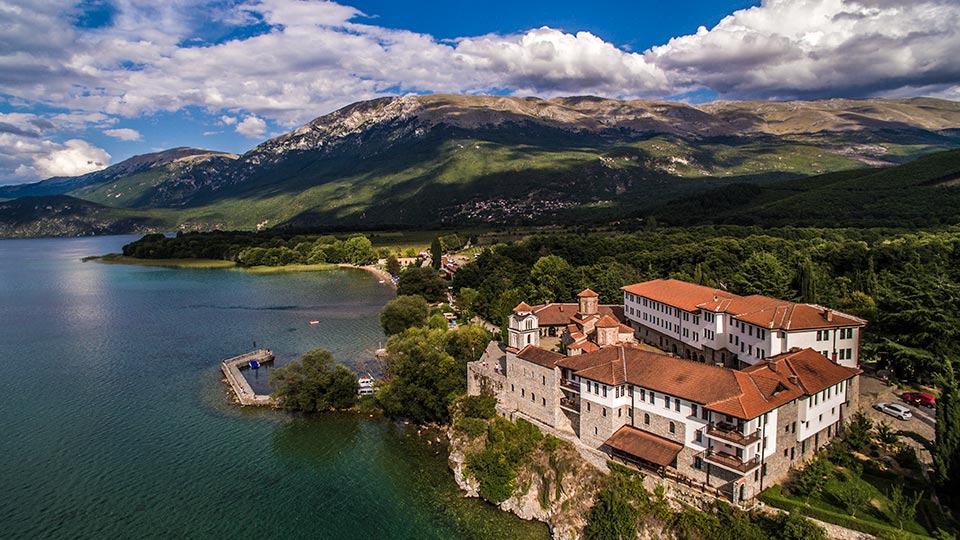
The interesting hydrographic form and the lush surrounding vegetation, the wildlife of the surrounding area, as well as the rich fauna in the water, are harmonized so that this spring is one of the most attractive places in the Republic of Macedonia. During the summer season you also have the opportunity to enjoy the yellow sandy beaches and crystal clear water, directly to the place where the water from this small lake flows into Ohrid Lake.
Springs by the Monastery St. Naum
Of all these hydrographic phenomena, the springs at the monastery of St. Naum have the greatest significance. Depending on your interest and time, you can take a boat trip along the St. Naum springs that form a picturesque small lake with two islands. It is estimated that this lake is filled by 45 springs, located at the bottom or the shore of the pond, and almost half of the clear cold water flows in it from Prespa Lake through underground rivers and watercourses through Galicica's limestone mass.
The springs of Ohrid Lake "St. Naum "consist of 30 underwater and 15 coastal springs with a total capacity of 7.5 m³/ s. The springs form a pond with an area of 30ha and a maximum depth of 3.5m. The water temperature in the pond throughout the year is from 10 to 12°C. The water at the springs originates, for the most part, from the mountain massif Galicica, and partially from the Prespa Lake.
Spring flora
The flora of the springs is rich and special that is reflected in the presence of endemic species, such as: the silica algae Calonic alpestris, Sellaphora seminulum, Sellaphora pupula f. rostrata and many others. The springs are the only habitat for these organisms.
Spring fauna
The fauna in the water from the springs is presented mostly with microscopic organisms that live on the bottom. From the larger organisms, there are 7 types of fish: the chub, the common nase, the roach (Pachychilon pictum), the Ohrid krkuska, the Pestani trout, the Ohrid vretenuska and the plasica. It should also be noted the presence of the snake belouska and the turtle. The presence of the ribarce and the small cormorant that is endangered species in Europe should be noted from the birds.
Paragliding in the National Park Galicica
The National Park Galicica is also a popular destination for paragliders. Paragliding as a recreational activity in the National Park Galicica is the main adrenaline and adventure attraction. The take off site is mostly located at the spot "Baba", on the regional road Ohrid-Trpejca-Carina-Resen, and the safe landing takes place on the beach at the auto-camp "Ljubanista". From this vista you have the opportunity to observe the unique sight, from which you can see the Ohrid and Prespa Lakes at the same time.
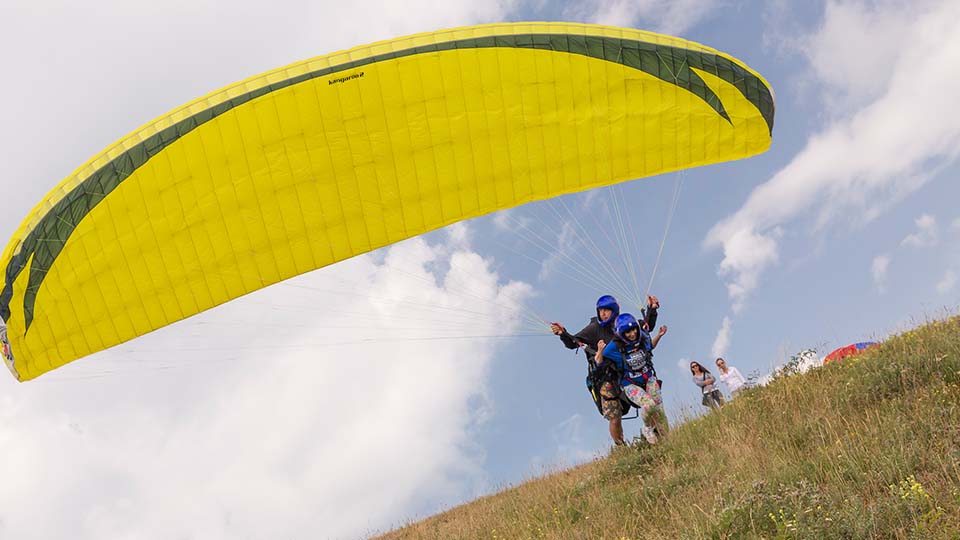
Mountain biking
The MTB trail Galicica is a wonderful place for mountain biking. The trail meets the criteria of both riders who make their initial steps and the more experienced ones. The ride along this trail gives the participants an unforgettable view to the Lake Ohrid on the stretch from Ohrid to Krstec, stage 1 - 3, a view that remains in one’s memory forever. The rest of the trail is traced along a mountain plateau with a grass cover. The abundance of a variety of flora and interesting relief forms further enhance the riding pleasure.
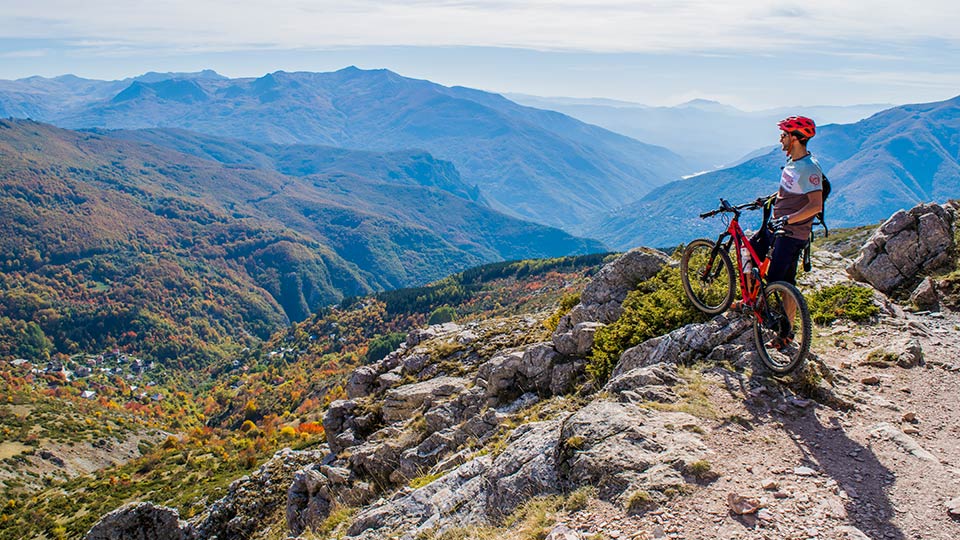
Speleology
In the park there are about ten underground karst forms - caves and abysses. The cave Samotska Dupka is the largest cave in the National Park Galicica. It is located on the east side of the karst Studino valley, in the upper part of a smaller, karst area, which transversely descends towards Studino. The total length of the cave is 224m. The highest point of the cave is 9m. An underground river once passed through Samotska Dupka. In the cave there are cave decorations salves, drapes and cave pearls, and stalactites and stalagmites are very rare.
Accommodation facilities in the National Park Galicica
You will need several days to get to know and enjoy the National Park Galicica. Do not worry about lodging. Most of the tourist and catering facilities in Ohrid and Prespa are within the boundaries of the National Park Galicica. Apart from the numerous hotels of medium and high category, accommodation can be found in other accommodation facilities, such as private villas and houses in most villages and settlements along the coast, as well as in several auto-camps.
Further information and contacts for visits and guided tours through the National Park Galicica can be found at the following website.

